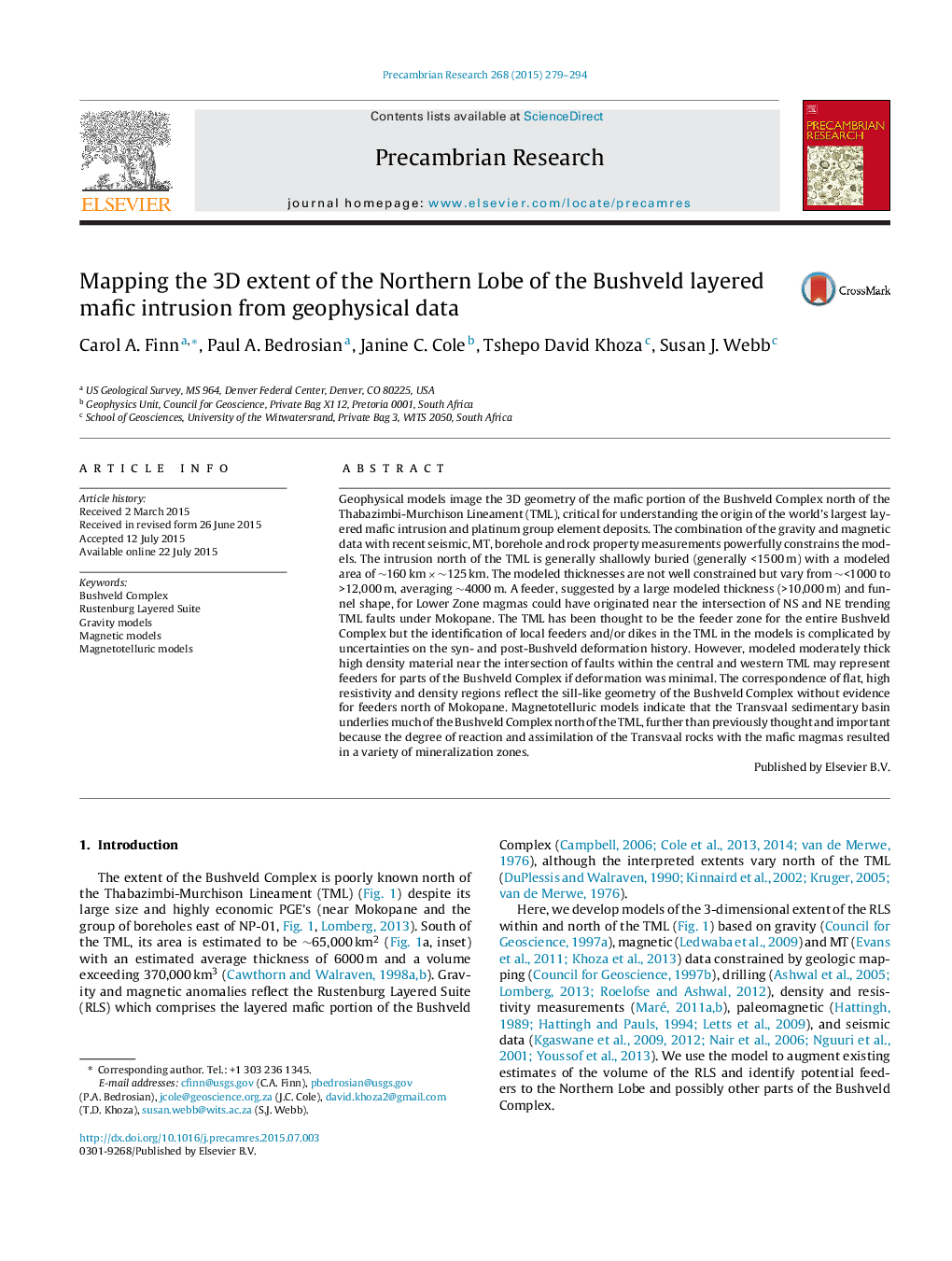| کد مقاله | کد نشریه | سال انتشار | مقاله انگلیسی | نسخه تمام متن |
|---|---|---|---|---|
| 4722640 | 1639607 | 2015 | 16 صفحه PDF | دانلود رایگان |

• 3D geophysical models image Bushveld Complex north of the TML.
• The ∼4 km thick, 160 km × ∼125 km layered mafic complex underlies ∼1–2 km of cover.
• Modeled thick spots in the TML may represent feeders to the Bushveld Complex.
• The magnetotelluric model locates buried Transvaal Supergroup north of the TML.
Geophysical models image the 3D geometry of the mafic portion of the Bushveld Complex north of the Thabazimbi-Murchison Lineament (TML), critical for understanding the origin of the world's largest layered mafic intrusion and platinum group element deposits. The combination of the gravity and magnetic data with recent seismic, MT, borehole and rock property measurements powerfully constrains the models. The intrusion north of the TML is generally shallowly buried (generally <1500 m) with a modeled area of ∼160 km × ∼125 km. The modeled thicknesses are not well constrained but vary from ∼<1000 to >12,000 m, averaging ∼4000 m. A feeder, suggested by a large modeled thickness (>10,000 m) and funnel shape, for Lower Zone magmas could have originated near the intersection of NS and NE trending TML faults under Mokopane. The TML has been thought to be the feeder zone for the entire Bushveld Complex but the identification of local feeders and/or dikes in the TML in the models is complicated by uncertainties on the syn- and post-Bushveld deformation history. However, modeled moderately thick high density material near the intersection of faults within the central and western TML may represent feeders for parts of the Bushveld Complex if deformation was minimal. The correspondence of flat, high resistivity and density regions reflect the sill-like geometry of the Bushveld Complex without evidence for feeders north of Mokopane. Magnetotelluric models indicate that the Transvaal sedimentary basin underlies much of the Bushveld Complex north of the TML, further than previously thought and important because the degree of reaction and assimilation of the Transvaal rocks with the mafic magmas resulted in a variety of mineralization zones.
Figure optionsDownload as PowerPoint slide
Journal: Precambrian Research - Volume 268, October 2015, Pages 279–294